Jaecoo J7 Summit SHS plug-in hybrid review
Just what is a Jaecoo? We take a deep dive into the range-topping plug-in hybrid Jaecoo J7 that promises the world for the price of a country
If you’re reading this review and wondering what a Jaecoo J7 actually is, you’re not alone, because the sub-brand itself seems a little confused.
Jaecoo is fathered by Chery, a Chinese state-owned carmaker that you may be familiar with from the Omoda 5 and Tiggo 7 Pro, but Jaecoo promises a higher level of premiumness — if that’s a word — and rugged capability.

The name Jaecoo is apparently a combination of ‘Jäger’, the German word for hunter, and ‘cool’. Apt, then, that it’s about the same exterior size as the Tiger Iguana — the Volkswagen Tiguan.
And although Jaecoo promises to be more upmarket than the likes of Tiggo and Omoda products from Chery, in truth the brand’s first model, the J7, retains a remarkably low sticker price.
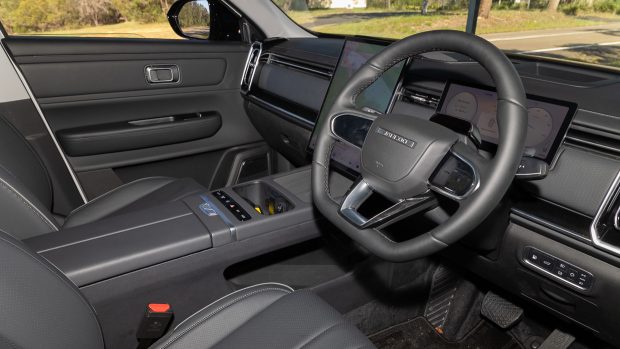
The car we have here is the most expensive plug-in hybrid version, using what Jaecoo calls a ‘Super Hybrid System’ pairing a turbo-petrol engine with generous 18.4kWh battery for a 1200km combined driving range claim. Impressive, especially at $47,990 driveaway.
To recap, the J7 is a medium SUV that promises at least some off-road performance — more on that soon with the AWD Ridge — and premium cabin for less than an equivalent Mitsubishi or Toyota. But does it deliver?
What are the J7 PHEV’s features and options for the price?
While the J7 starts at $34,990 driveaway the top-spec Summit plug-in hybrid is a fair amount more money, at $47,990 on the road.

But you know what? That’s still seriously cheap for a vehicle that has both a combustion engine and a battery that obliges 90km (WLTP, 106km NEDC) electric-only driving range. See a list of rivals below, including price and electric driving range, for context.
- BYD Sealion 6, 92km (NEDC) — $52,990 + ORCs
- Haval H6 GT PHEV, 180km (NEDC) — $53,990 driveaway
- Mitsubishi Outlander PHEV (ES/Exceed), 84km (NEDC) — $57,290/$69,290 + ORCs
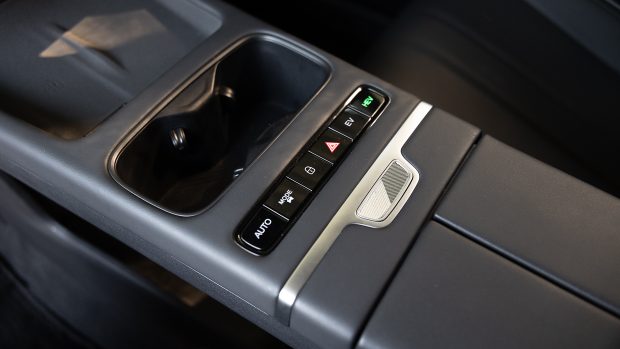
The J7 Summit isn’t poorly equipped, either, with the below standard features — justifying the comparison to high-spec rivals.
- 19-inch aero alloy wheels
- LED headlights with auto highbeam
- Auto wipers
- Keyless entry with proximity
- No start button
- Power tailgate
- Vinyl upholstery
- Six-way power driver’s, four-way power passenger’s seat
- Heated and ventilated front seats
- Air-conditioned centre storage box
- Dual-zone climate control
- 10.25-inch digital driver’s display
- 14.8-inch multimedia touchscreen
- Eight-speaker Sony sound system
- Wired + wireless Apple CarPlay & Android Auto
- Head-up display
- Panoramic sunroof
- Power door handles
- 360-degree camera
- Front and rear parking sensors
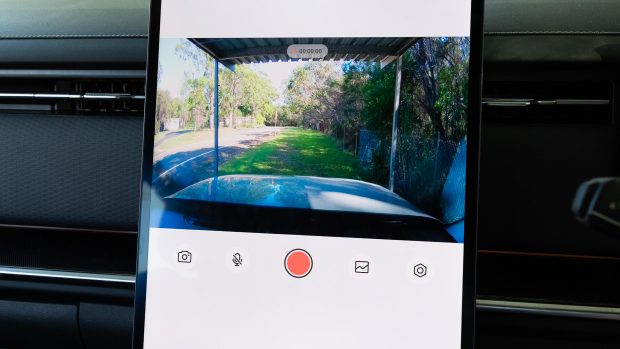
Safe to say, the J7 plug-in hybrid offers stellar on-paper value, and providing you’re okay with its slightly smaller exterior dimensions compared to the anonymous-looking BYD Sealion 6, it might be the best offering of the lot.
How does the J7 PHEV drive?
Spec sheet value is just one element — an impressive one — but rarely the whole story of any car. And this is where we arrive with the Jaecoo J7. Aside from blissful quietude at low speeds, the Jaecoo J7’s cost cutting is obvious as soon as you turn a wheel and much of it comes down to calibration.
The plug-in hybrid system has a 150kW/310Nm electric motor that does the bulk of the heavy lifting via a single-speed front axle. The 105kW/215Nm 1.5-litre turbo petrol four-cylinder works to keep the battery charged but also drives the front wheels directly.
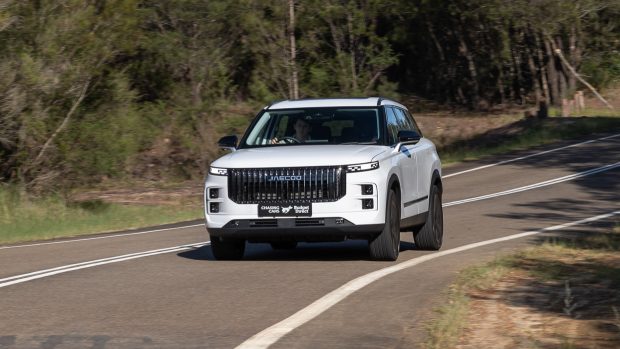
Jaecoo isn’t forthcoming with combined peak outputs, but the 1794kg (tare) J7 never feels fast, even though it has enough grunt to light up the front wheels in the wet, which is amplified by the unpredictable power delivery.
Editor Jez Spinks said the J7 “hesitates at roundabouts like it has a bad old DSG gearbox” and he’s right. It’s tricky to trust when nipping into gaps.
The grabby brake pedal suffers from a similar, digital feel, making it difficult to drive the J7 smoothly around town. There is some adjustability to regenerative braking but no one-pedal mode.
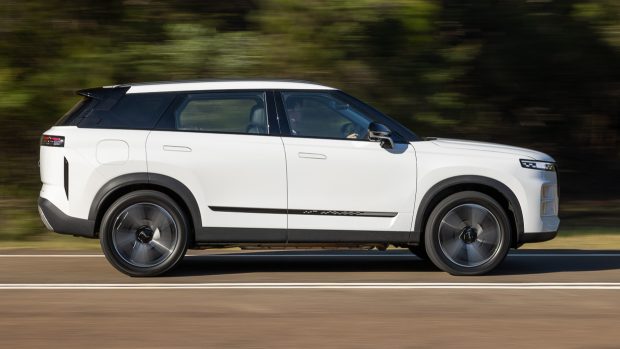
It’s a similar story with the steering feel. The J7 plug-in hybrid’s steering sorely lacks self-centring, so when coming out of a 90-degree corner the driver needs to manually unwind the last bit of lock like a SEGA rally arcade machine — it’s not pleasant.
Things don’t improve at speed, where the steering’s on-centre dead-zone makes the Jaecoo J7 tiring in the countryside.
Another problem for the J7 PHEV is tyre noise. It isn’t louder than your average mid-sizer, but the pitch of the note is very intrusive above 80km/h.
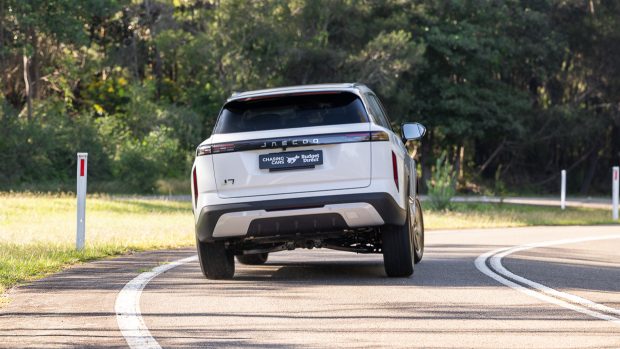
Cabin noise in general is quite high in the Jaecoo J7, where you can hear the suspension clunking away over big and small bumps alike. It’s harsh around town, too, with small bumps crashing into the stiff-legged J7’s cabin.
Thankfully for the Jaecoo J7, there’s a ‘but’, because underneath these layers of inconsistency and lumpiness it feels like there’s a good primary ride, while respectable road-holding from the 235/50 R19 Kumho Ecsta tyres smothers some of its shortcomings.
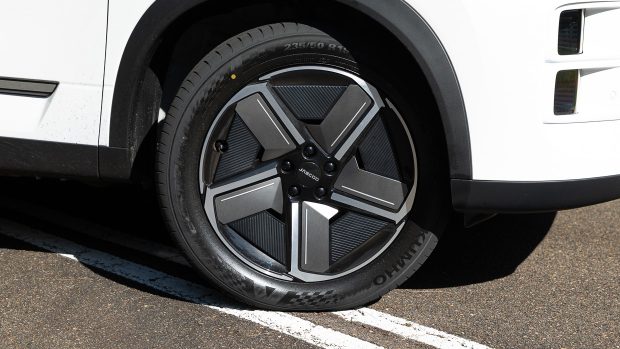
Visibility is poor with a high bonnet line and thick C- and D-pillars, though this is offset with a cool 360-degree camera system that allows you to ‘see though’ the underside of the Jaecoo J7.
What is the J7 PHEV’s interior and tech like?
The Jaecoo J7’s exterior — pop-out door handles and all — is clearly inspired by Evoques and Velars. Inside, though, the inspirations are more disparate.
Vents from Volvo, touchscreen, gear selector stalk and faux twin wireless charging pad from Tesla, and Mercedes-Benz lookalike screens and speaker grilles, the Jaecoo J7 doesn’t cut its own shape.

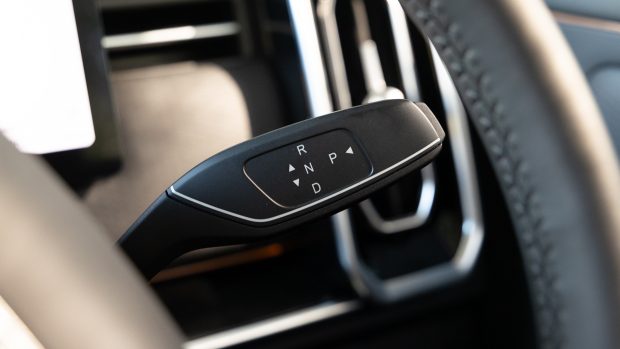
Again, it’s a shame, because Jaecoo appears to know how to screw cars together. The construction is sturdy and the materials chosen are rather plush, with squishy plastics on top of the dash and door cards.
Premium, though? Not quite. Body colour is visible all around the inside of the window shuts, there’s a tinniness to the way the doors close and the seats have sweaty, shiny vinyl upholstery parading as perforated leather.
This is a bigger question than a car review, but there’s an unhealthy obsession with trying to copy leather. The J7 would be a more pleasant place to sit, and more fit-for-purpose if its chairs wore hard-wearing non-shiny textiles instead.

On the topic of seating, the J7 gets impressive-for-the-price heating and ventilation (accessed through the touchscreen, like the HVAC) but the six-way power driver’s seat has lumpy adjustment and a bulbous top third that pushes the back forward. The passenger’s seat is set too high as well
The central, portrait-oriented touchscreen is large and bright yet the graphics are anonymous, and interacting with the screen is often laggy. Plus, key functions are buried in difficult-to-understand sub-menus without sensible shortcuts

In the back, the Jaecoo performs well for its compact size. There’s plenty of space for two adults in the back, though the middle seat is seriously uncomfortable. It folds out into an armrest with two cup-holders, and there are two more bins in the doors for drinks.
As in the front, the build quality and materials are pleasant, though without ventilation the upholstery gets baking hot beneath the standard sunroof.
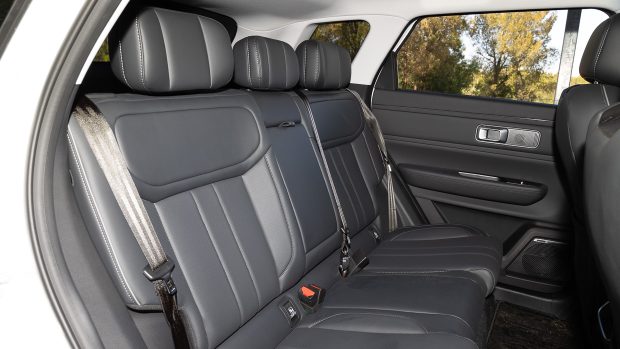
Amenities in the Jaecoo J7’s back seats include map pockets with device holders, USB-A and -C charge points, bright LED lighting, and (strangely) a singular adjustable air vent. Visibility is okay, but compromised by the high beltline and massive oblong headrests.
The Jaecoo J7’s back seat has three top tether anchors and Isofix points for two outboard seats.
The trade-off for a generous rear seat is a small-for-the-class boot, which measures 340 litres to the cargo cover or 500L to the roof. You have to lift items quite high into the boot, but once done it is fairly smart with six tie-down points, a 12-volt socket, cargo cover, shopping bag hooks and extra storage beneath the boot floor for charging cables.
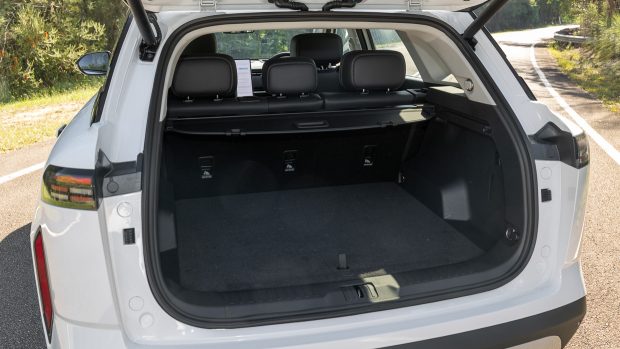
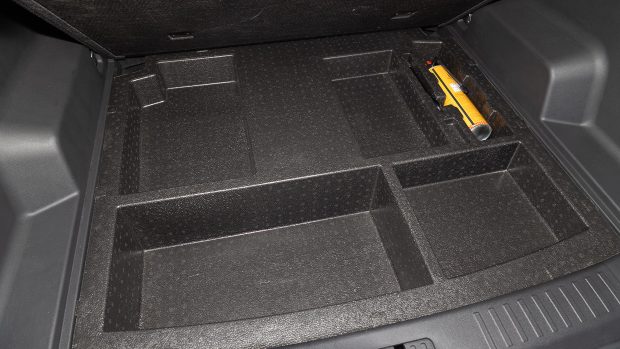
The Jaecoo J7 Summit plug-in hybrid does not have a spare tyre, but an inflation kit is provided.
Is the J7 PHEV a safe car?
The Jaecoo J7 is yet to be evaluated by safety body ANCAP, but its European relation awarded the plug-in version five stars against the latest criteria.
The J7 fits eight airbags, including front centre and driver’s knee airbags.
It was awarded 81 percent for adult occupant protection, 80 percent for child occupant protection, 80 percent for vulnerable road user protection and 80 percent for safety assist.

In the real world, parent company Chery has copped heavy criticism for over-active lane-keep and driver monitoring aids. The J7’s tuning is better, in a sense, because the systems are less intrusive. You can also permanently disable the speed limit assist chime.
However, at times when we hoped the lane-keep assist would step in and help, it didn’t, which means the system needs further real-world tuning. The adaptive cruise control was tiring to use as well, pulsing its speed constantly while choosing inconsistent following distances.

Below is a list of active safety features fitted to the Jaecoo J7.
- Autonomous emergency braking (AEB)
- Lane-keep assist
- Lane-departure warning and prevention
- Adaptive cruise control with stop and go
- Blind-spot monitoring
- Rear cross-traffic alert with braking
- Speed limit assist
- Driver attention monitoring
What are the J7 PHEV’s ownership costs?
To ease nerves about a new brand name, Jaecoo offers a solid ownership package including an eight-year, unlimited-kilometre warranty and an equal period of free roadside assist.
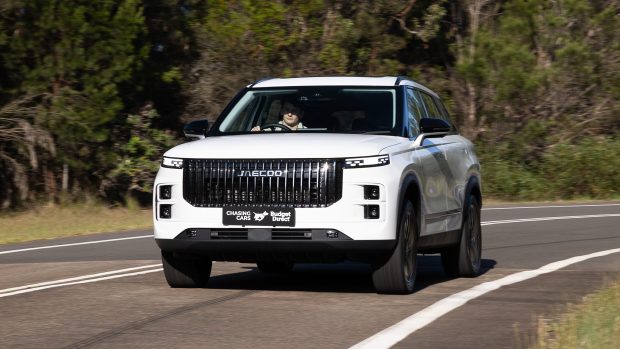
Service pricing is also capped for eight years, with maintenance due every 12 months/15,000km. Total cost over five years for the plug-in hybrid is a reasonable $1895 averaging $279 annually.
The big advantage we’re spun about plug-in hybrids are low running costs, and the Jaecoo J7 is no different. The Jaecoo J7’s combined ADR fuel consumption rating is just 1.0L/100km, for a miserly 31 grams of carbon per kilometre. That’s almost as good as an EV, right?
As always, your mileage will vary — massively — with a plug-in hybrid depending on your charging schedule and route. Our typical 200km mix of suburbs, rural roads and motorways revealed a combined 3.6L/100km figure mixing petrol and electric propulsion.

That isn’t bad, and nor is the real-world 80km electric-only range you’ll get from the car — if that is a little short of the 90km WLTP rating. Jaecoo claims the J7 will go a combined 1200km from a full tank and electricity stores, which would require you to average 5.0L/100km.
This would be achievable in favourable conditions, with occasional stops and starts, and average speeds of between 60-90km/h. On the motorway at 110km/h, though, the petrol engine chews through petrol at more like 8.0-9.0L/100km, so don’t bet on driving Sydney-Brisbane without a fill-up.
The J7 plug-in hybrid is able to charge its 18.4kWh battery at up to 40kW (DC) with a 30-80 percent session taking 20 minutes. Slower AC charging will take just under three hours with a 6.6kW maximum rate from 25-100 percent — as a PHEV, the J7 never lets its battery go fully flat.
The honest verdict on the J7 PHEV
There’s plenty to get buyers into Jaecoo dealerships, such as cheap pricing, impressive electric-only range, strong warranty promises and decent service pricing as nice dangling carrots.
Plus, there’s the look of the thing. To some it may look like a Range Rover knock-off, but others may appreciate the bluff aesthetics. Inside, the build quality is equal to a Mitsubishi Outlander plug-in hybrid yet technology blows that rival away.
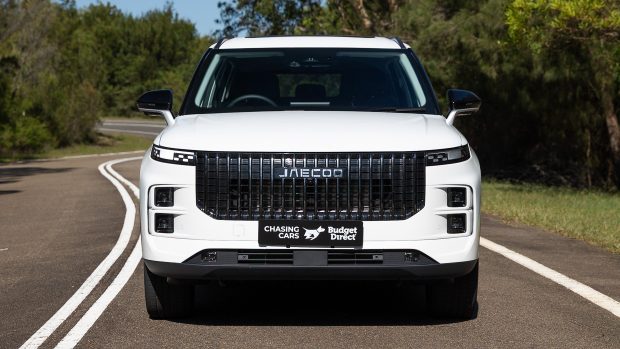
And yet, it all comes undone when you start digging deeper. The Jaecoo J7 needs steering, drivetrain calibration and suspension revisions, because under the woolly unpleasantness is a chassis that seems to have potential.
Here’s hoping a mid-life update will address the J7’s shortcomings. The Jaecoo J7’s main selling point isn’t personality or prowess, but a cheaper price than rivals.
Audi S3 2025 review
6 months ago

Ingolstadt has added juicy go-faster upgrades to its small all-rounder. Is S3 now properly S-for-spicy, or merely half-RS-ed?
Good points
- More punch
- Bigger brakes
- Tricky RS3 diff
- Sharper handling
- All-round finery
Needs work
- Some powertrain hiccups
- Moderate bang for buck
- Looks like the A3…
- Some silly cost options…
- …and that $10K exhaust!
Wheels on Aussie terra firma since 1999 has given the S3, the all-rounder of Audi’s small ‘3’ model line-up, a long enough innings to cultivate a bona-fide cult following all its own. Audi Australia has delivered over 12,000 S3 hatches through four generations and sedan versions through gens three and four.
So there’s been much to like about the arguably classier, premium-grade Volkswagen Golf R alternative for quite some time now. Throughout, Audi’s small performance model has offered a broadly appealing formula to both mature buying tastes to younger torchbearers who know, all too well, the attention S3 gets with the constabulary.

With this midlife facelift of the fourth (8Y) generation, the S3 arrives alongside a humbler A3 sibling. And the latter has copped a sport-styling makeover in facelift, leaving it almost a dead-ringer twin of the former, if without much to talk about under the A3’s skin. But with S3, however, it’s a different and more enticing story…
The headline upgrades to S3 are larger where they matter most to its throng of fans. The evergreen EA888 2.0-litre turbocharged petrol four has been tricked to most of the Volkswagen Group’s most potent tunes, outputting 245kW and 420Nm up seven kilowatts and 20Nm – with torque over the thicker 2000-5500rpm rpm band – compared with the pre-facelift S3.
Not merely a customary one-tenth drop in 0-100km/h performance (now 4.7sec claimed), the engine now fits a ‘preloaded turbocharger’ that ups the idle speed, depending on drive mode and conditions, for crisper off-the-mark punch.

Braking is larger: whopping 357mm diameter, 4.0mm-thicker composite steel-aluminium rotors with two-pot slide calipers up front. And rounding out the front end is a raft of suspension changes: double the negative camber, new pivot bearings, stiffer wishbone bearing, et al, complete with S3’s obligatory 15mm ride height drop.
The major change is in the rear. Gone is the time-honoured Haldex-type rear differential, replaced by the dual-clutch pack fully variable torque splitter differential handed down from RS3. It can fire up to 100 percent of rear axle torque to one or the other wheels.
New hardware is accompanied by new software: a debut of Dynamic Plus mode aimed at milking the best from the preloaded turbocharger, throttle response and newfound rear axle trickery. And it brings its own ‘looser’ sport ESC calibration.

Subtle restyling, light interior tweaks, and reshuffle of standard and optional equipment and other details line the facelift periphery, but it’s the go-faster boost that defines this mid-life fourth-gen update.
So does the S3, in classic hatch and sedan guises, taps its inner Jekyll harder? And without upsetting its Hyde in the process?
What are the S3’s features and options for the price?
The S3 kicks off at $78,800 before on roads for the Sportback and wants for $81,800 list for the Sedan. Or $24,000 more than the similar-looking if vastly tamer A3 35 TFSI siblings.
Why $3000 more for the four-door? It’s hard to say (even for Audi Australia). Both body styles get the same hardware and software, same 4.7sec 0-100km/h claim, exactly the same 1610kg kerb weighbridge tickets. Bootspace? They’re both 325 litres…

Standard equipment includes:
- 19-inch Audi Sport wheels
- 357mm front dual-pot brakes
- Quad-outlet exhaust
- Dual-clutch torque-splitter rear LSD
- Adaptive damper suspension
- Variable ratio steering
- Matrix LED headlights
- Heated, folding, auto-dimming mirrors
- Fine Nappa leather electric heated front seats
- Sonos 15-speaker 3D audio
- 12.3-inch Virtual Cockpit instrumentation
- 10.1-inch touchscreen media
- Audi Connect Plus navigation
- Wireless Apple CarPlay and Android Auto
- Inductive phone charging
- Colour ambient lighting
- Tyre repair kit
Available options include a Black exterior pack ($1560), a Launch Edition Package ($1450) including five-arm Audi Sport rims and cosmetic upgrades, as well as a Carbon Package ($5850) with “carbon” effect detailing such as mirror caps and rear spoiler.
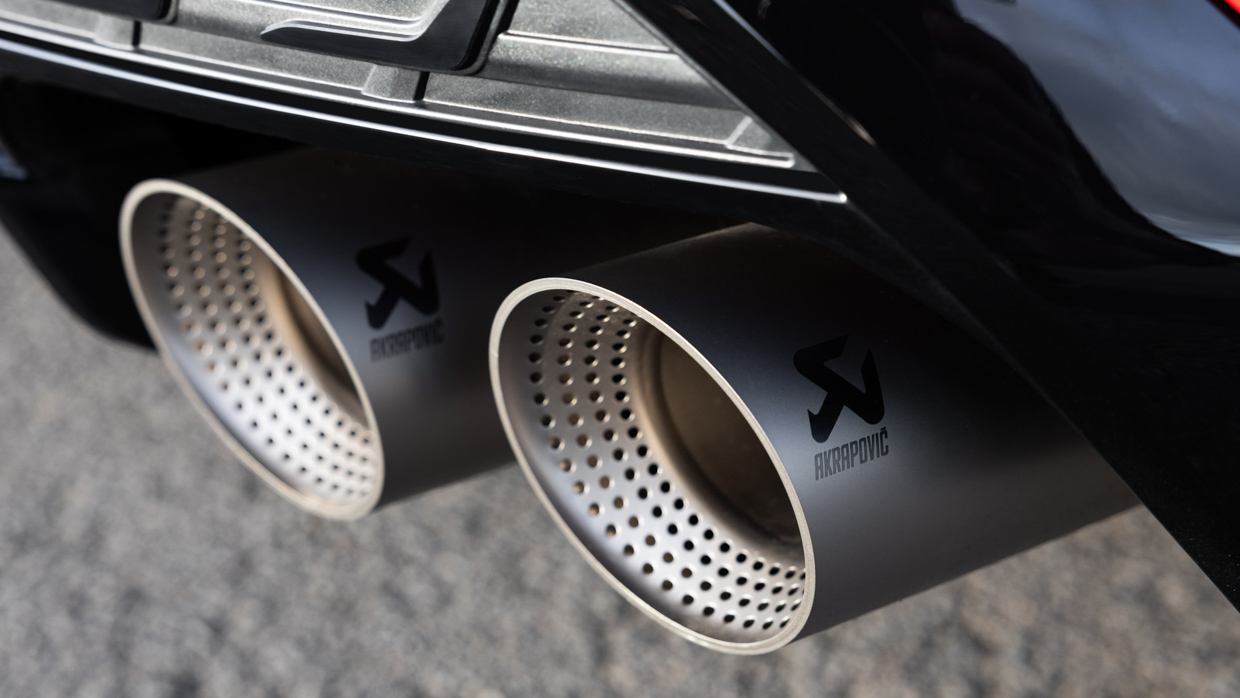
A Premium Plus Package ($3300) brings a head-up display, panoramic glass roof, and mirror and driver’s seat memory. Perhaps reserved for S3 completists are the ‘AE matte’ paint finish ($11,400) and the laughably pricey Akrapovic branded titanium exhaust system ($9900).
There’s no upcharge for the eight available metallic or pearl colours offered, save for Ascari Blue ($900) that’s purportedly a special Audi Sport hue.
How does the S3 drive?
The S3 has enjoyed a lengthy evolution road to get to its gen-four midlife update, so it’s not surprising that its well-worn technical DNA comes together in an impressively polished manner during the urban point and shoot or at a highway canter.
What separates Audi’s small performance breed from hatchback firecrackers such as Hyundai i30 N and even the strongly related Golf R is a sheen of tempered maturity. It’s very moderately tempered when dialled back and at part throttle, as it should be.
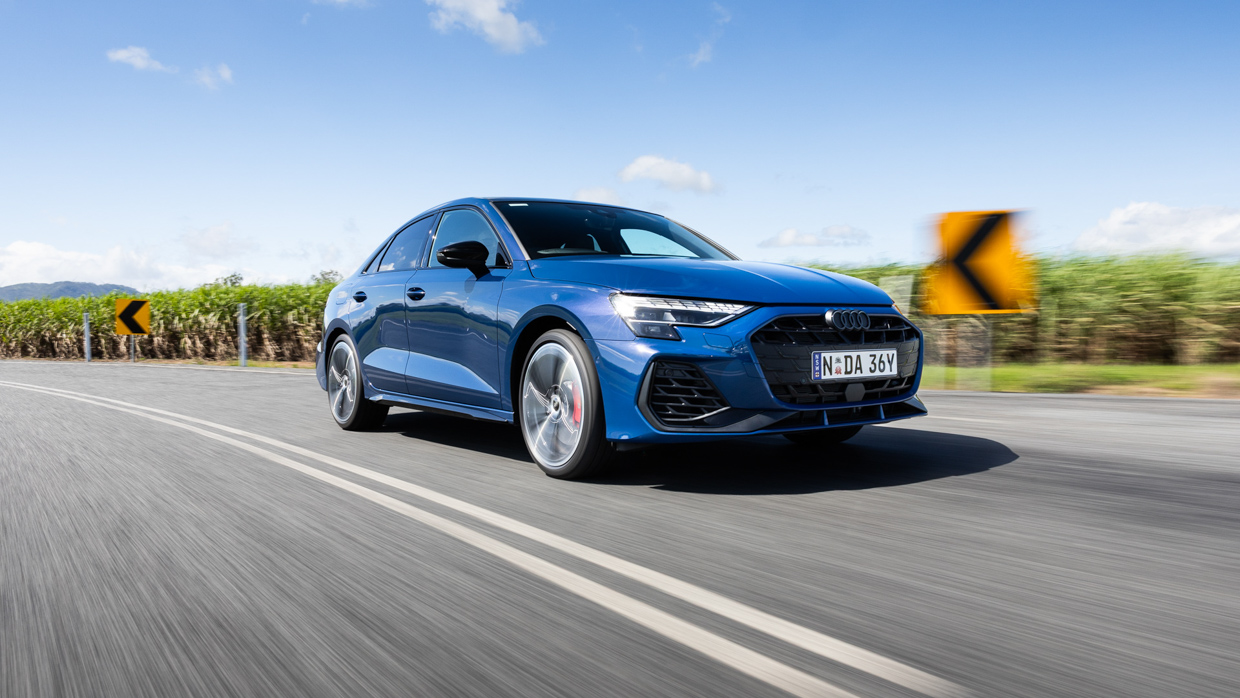
It balances maturity and muscularity particularly well. It rarely feels too lazy and you have to start digging through drive modes to draw out proper feistiness. And it’s almost always comfortable at cruise and wholly unfatiguing or niggled with gremlins.
While S3 isn’t the fieriest small hatch or sedan option out there, it’s quite possibly the nicest and finest.
The reengineered front end feels more focused and connected, if perhaps by shades over the pre-facelifted version. Steering isn’t the last word in communication – Audi’s variable ratio racks still rob intimacy against the static (A3) spec – but it’s far more faithfully and linear than it is fidgety.

Throw at some tight mountain curves, there’s an assertive pointiness the S3 musters out of its 235mm Goodyears that its forebears, and even old RS3s, struggle to match. Its 1.6-plus-tonnes tracks tenaciously and breaks into mild, predictable, easily recoverable understeer once you really push the friendship with the front end.
Change of direction, too, is crisp, and it’ll lunge from one corner apex to the next at a heady pace – one that could threaten your licence if you dig deeper into its well of handling capabilities, one supposes – without needing reaching for Dynamic drive mode.
And there’s still Dynamic Plus to uncork, that really brings new torque vectoring rear diff to good use, increasing the torque feed to the outside rear wheel in a natural and quite effective manner.
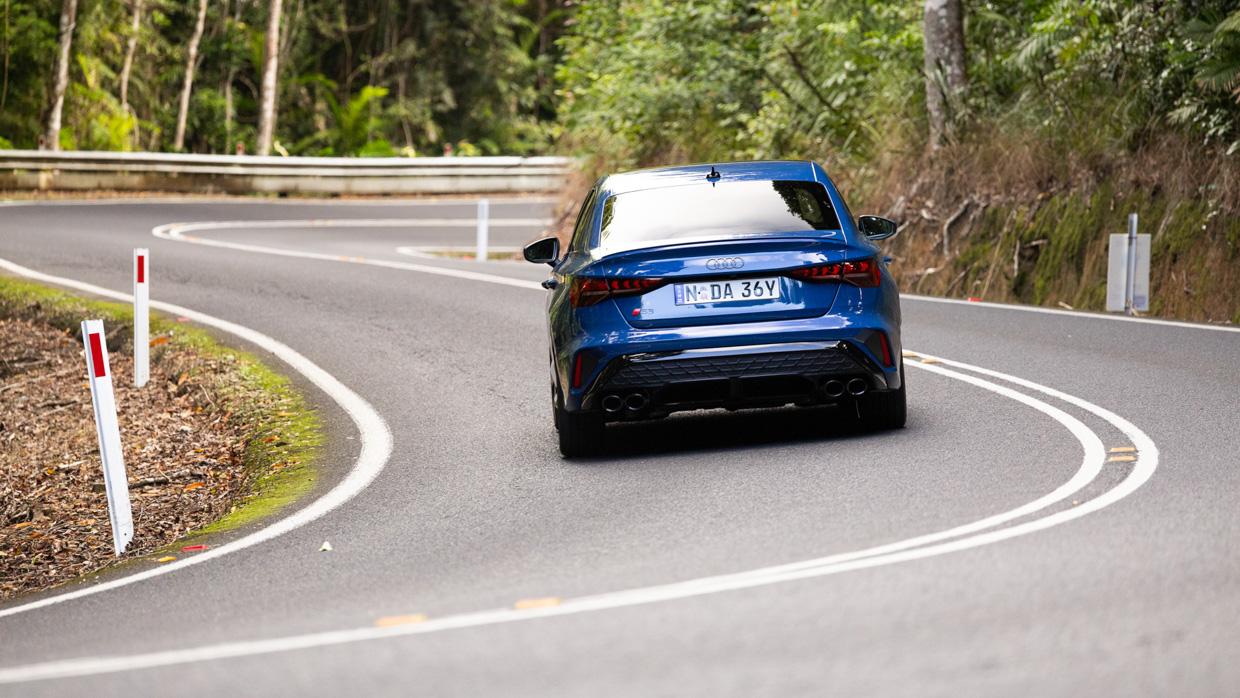
There’s a sense that Audi’s improved S3’s balance across its axles. And it conjures up some impressive grip. So it does take a fair degree of enthusiasm to uncork its newfound torque vectoring talents, which is subtly noticeable both on corner entry and exit, at speeds below those best reserved for a racetrack.
It’s not RS3 agile or quite as tenacious in the curves. But as a rewarding driver’s car that’s capable and swift, the S3 walks the walk. Nor it is, at 4.7sec 0-100km/h, RS3 quick, though the milder sibling isn’t hanging about when called to march.
It settles nicely into grand tourer mode, too, even left to the broader drive modes where the adaptive dampers sort themselves out, never feeling like the chassis has dropped the ball on chassis control or bump compliance. For 19s-shod sport suspension, it’s acceptably comfy and free of any annoyances bar some tyre thrumming on coarse surfaces.

But the powertrain isn’t perfect. Yes, the preloaded turbocharger smarts putties over off-the-mark hesitation in throttle response, but don’t expect anti-lag like histrionics.
Further, the engine and transmission marriage can be caught snoozing. During one overtaking kickdown moment, there was a pronounced pause between throttle trounce and powertrain battle stations, almost feeling like some sort of ones and zeroes hiccup in the software.
In fairness, this indiscretion only happened once and it never reoccured on our test drive.
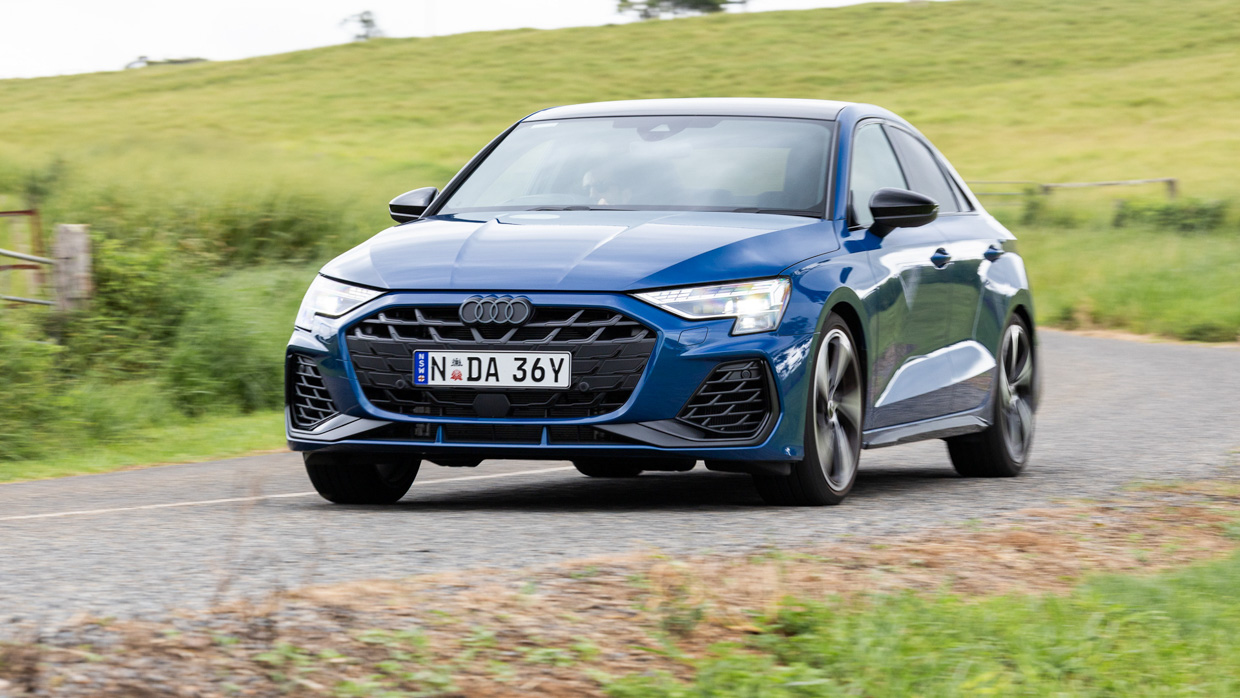
Overall, though, it certainly seems as if Audi honed the S3 a little nicer on road, because there’s certainly some impressive synergy in its technical interplay.
What is the S3’s interior and tech like?
As we reported in our review of the facelifted 2025 A3, Audi Australia’s gone to some pains to spec the local 35 TFSI to mimic the S3 inside and out almost to the point of facsimile. So it stands to reason that not much has really changed with the cabin of the updated S3…on purpose.
It’s a nice and fairly opulent space to spend time in, its asymmetric oh-so-Audi design language still fussy and somewhat charming, if starting to show its age, especially in the tech department.
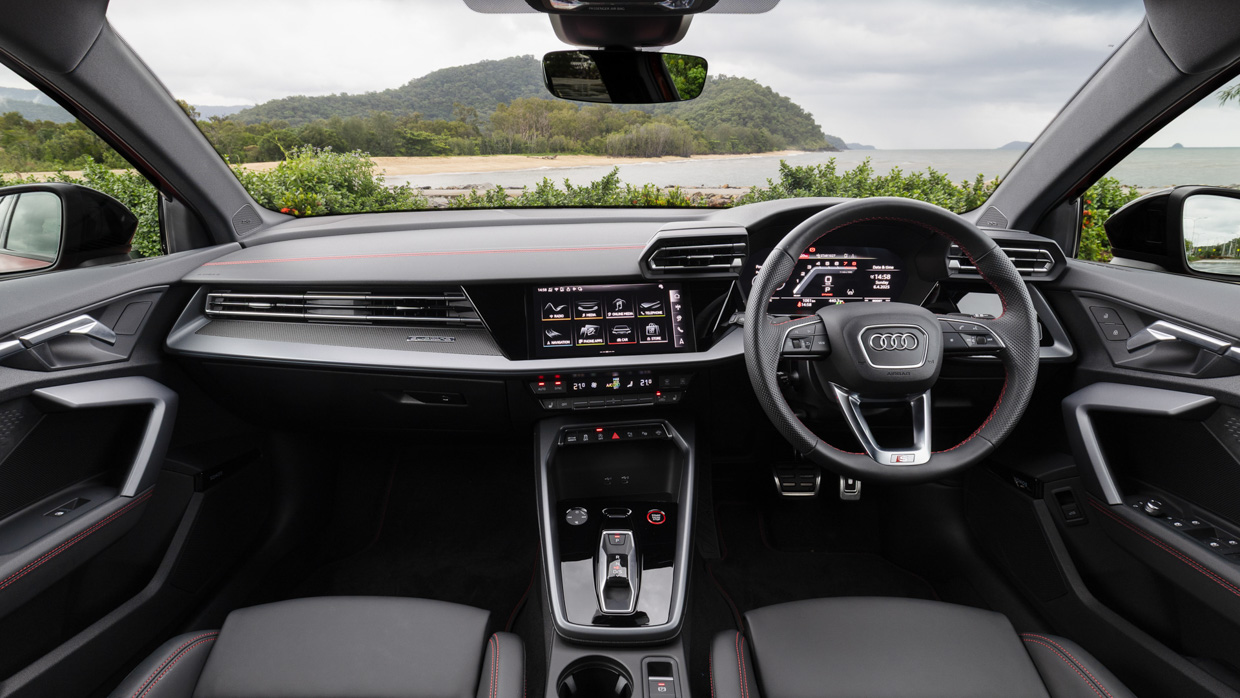

The A3 graduated to 12.3-inch Virtual Cockpit, now matching S3 without much distinction at all. But the disappointment is that the performance version – $24K pricier, remember – fits the same modest 10.1-inch MMI Navigation Plus, with little more in the upgrade department bar some new Audi app functionality that allows mirroring of YouTube and the like.
Sure, there’s a nice 680-watt Sonos 3D sound system as an S3 exclusive – and a fine system at that – but why is head-up display a cost option in a prospect well into $80K region on road?
The seats, though, are wonderful, marking S-spec authority over the A3 pews via lush nappa leather and diamond stitching that never fails to charm. Four-way lumber adjustment allows the front occupants tailor-fit long-haul comfort.
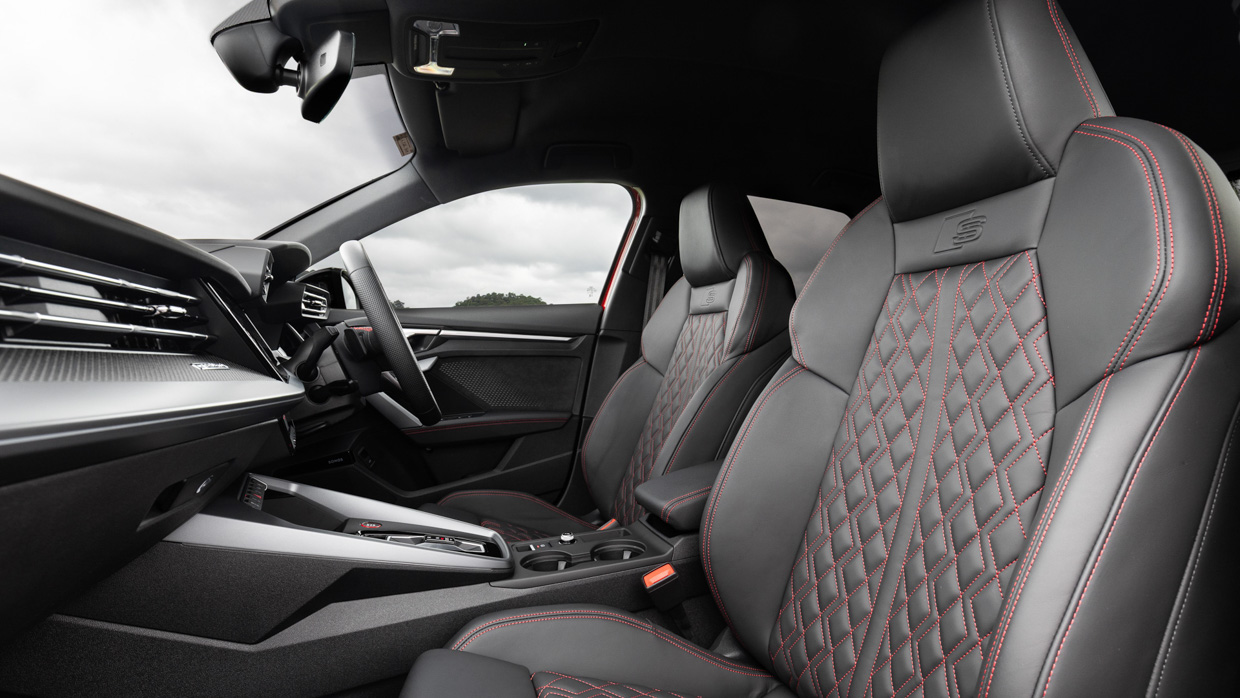

The circular wheel is classy – none of that flat-bottomed stuff – and the cabin’s sensible blend of touchscreen and physical button/dial/switch balance is vastly more intuitive than recent Golf efforts.
There is some clumsiness: the drive select button, as is Audi tradition, is a scroll through affair and the new gloss black centre console ‘shifter’ surround, one of the cabin few new facelift tweaks, will reflect sunlight straight into the driver’s eye during a midday punt.
Material choice is varied and well presented in most cabin areas, with a lift above A3 stock particularly noticeable in the perforated door panel and rather elaborate ambient light array.

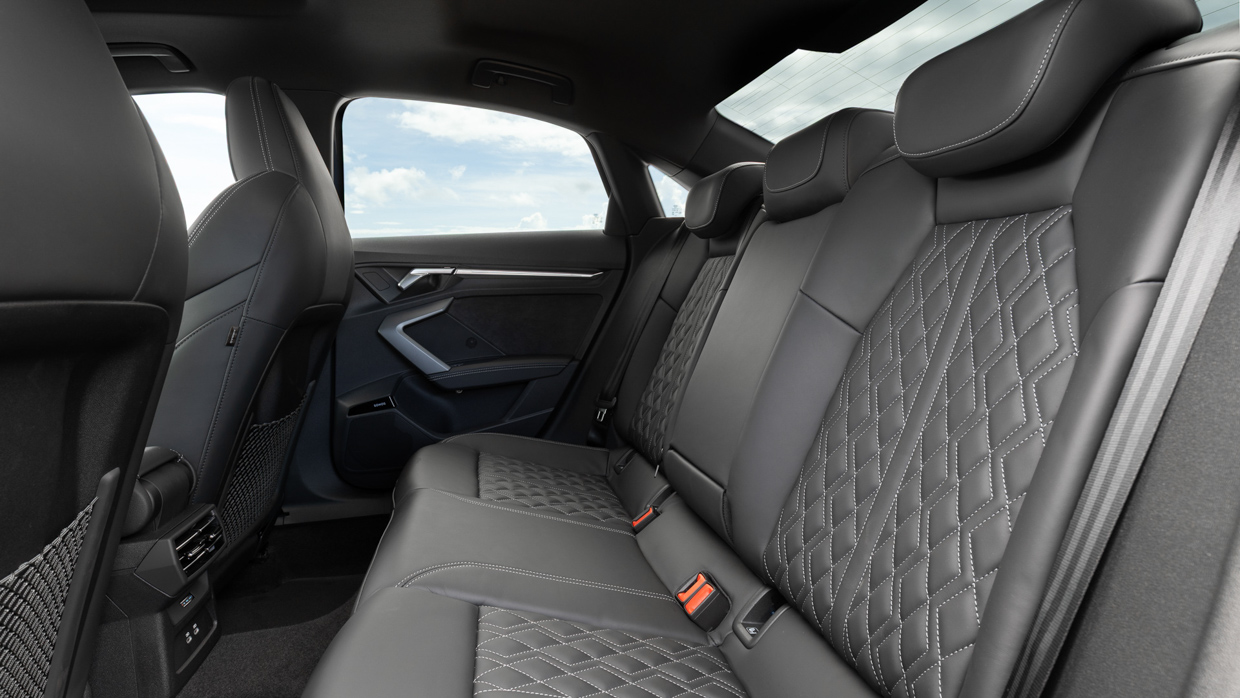
Second row room is decent if unremarkable, making S3 (or A3) a suitable four-adult proposition but only realistically a five-seater at a pinch with compromised comfort.
While the leather trim extends through from row one, there’s little else separating As from Ss, down to the third-zone climate control array.
Both body styles fit 40:20:40 rear seat back split-folding, with the aforementioned equal 325-litre boot volume, though it’s the more affordable Sportback that offers the more generous load-through for pushbikes and larger cargo, liberating 1145L as a two-seater.
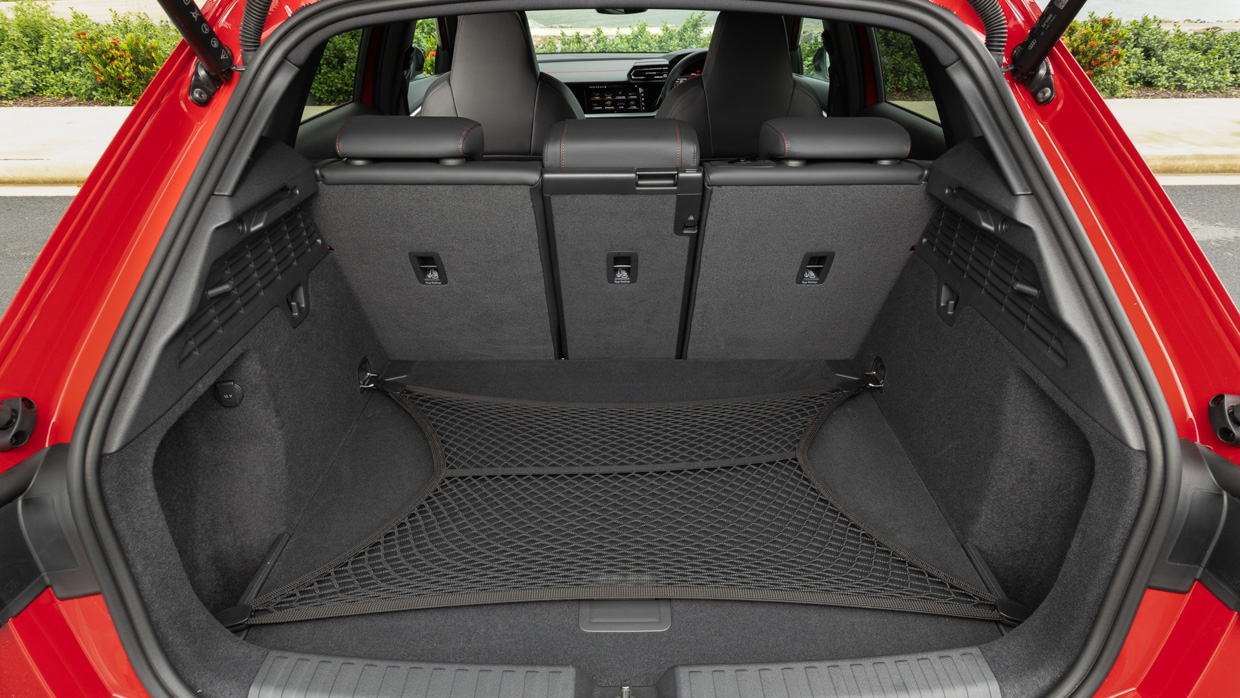

Unlike the A3, which fits a space saver spare, the S3 just gets an inflator kit.
Is the S3 a safe car?
While the little brother A3 carries over ANCAP’s pre-facelift five-star assessment date-stamped from 2020, this rating excludes all-wheel-drive trim such as the S3, which was and remains unrated.
Purely as a barometer of sorts, the A3 scored 89 and 81 percent respectively for adult and child protection, with 68 for vulnerable road user protection and 73 percent for safety assist. The A3 and S3, in facelift, share exactly the same assistance system features.
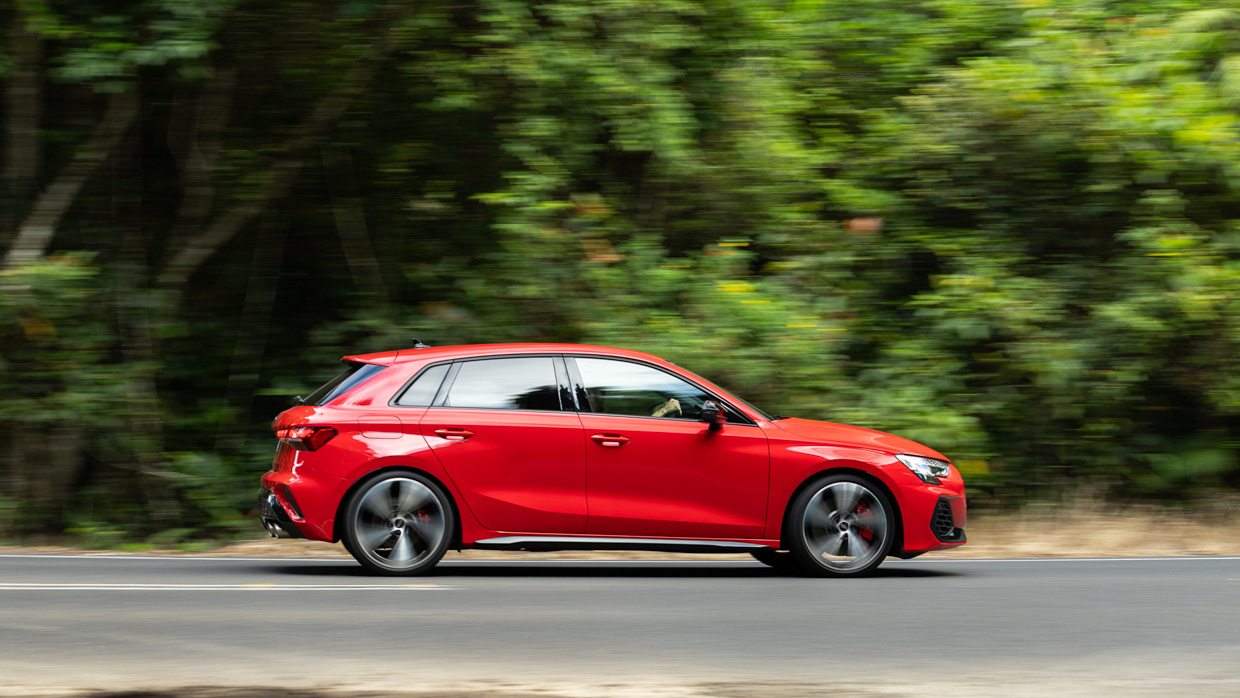
Features included are:
- Forward AEB
- Lane departure warning
- Lane change assist
- Exit warning
- Park assist
- Turn assist
- Rear cross traffic alert
- Adaptive cruise control
- Front and rear parking sensors
- Reversing camera
- Side assist (blind spot warning)
- Exit warning system
The A3 and S3 fit six airbags, if with no front-centre airbag unit.
The two S3s we drove, one Sportback and one sedan, were free of annoyance and foibles during our test. The lane keeping function arms on restart, but is easily switched off by holding down a button on the end of the indicator stalk.
What are the S3’s ownership costs?
Audi claims fuel consumption of 7.8L/100km for the slightly aero-slipperier Sedan and 7.9L/100km for the Sportback. Unlike the A3, there’s no so-called MHEV 48-volt hybrid system, but the S3 isn’t missing much…
Start extracting its 4.7sec 0-100km/h potential and consumption will quickly skyrocket into double figures, and the stinger is that the S3’s 2.0-litre demands pricey 98-octane fuel.
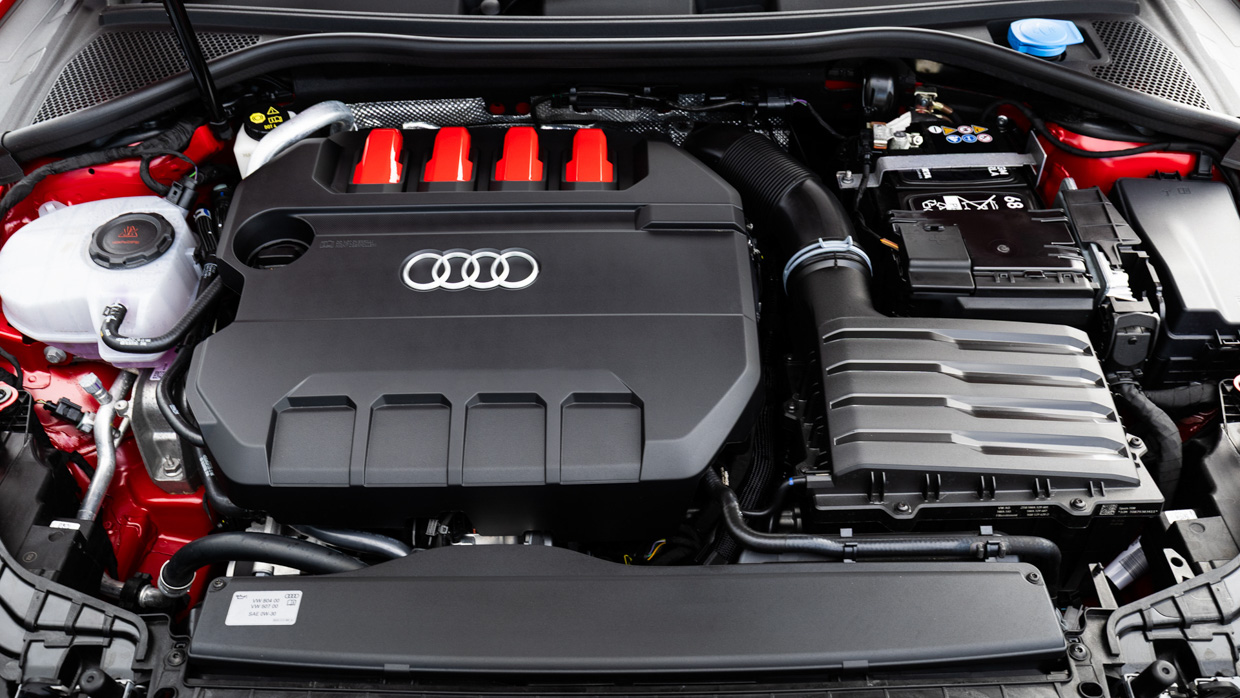
Audi offers a five-year service plan at a quite decent $2890, around $370 more than the A3 front-driver over five years, with servicing intervals of 12 months and 15,000kms.
The S3 is covered by Audi’s five-year unlimited-kilometre warranty, covered from the initial point of registration (not the time of purchase or delivery).
The honest verdict on the S3
In what seems like an era where wool-dyed petrolheads seem increasingly neglected, it’s kudos to Audi for catering quite specifically to the real fans and cult followers of the S3 breed with enhancements that matter.
With suitable commitment on the right piece of blacktop, the S3 is very capable indeed. In fact, it does a fine job of approaching the sort of driving engagement and heat one might otherwise expect from its more heroic, gym-honed RS3 stablemate.
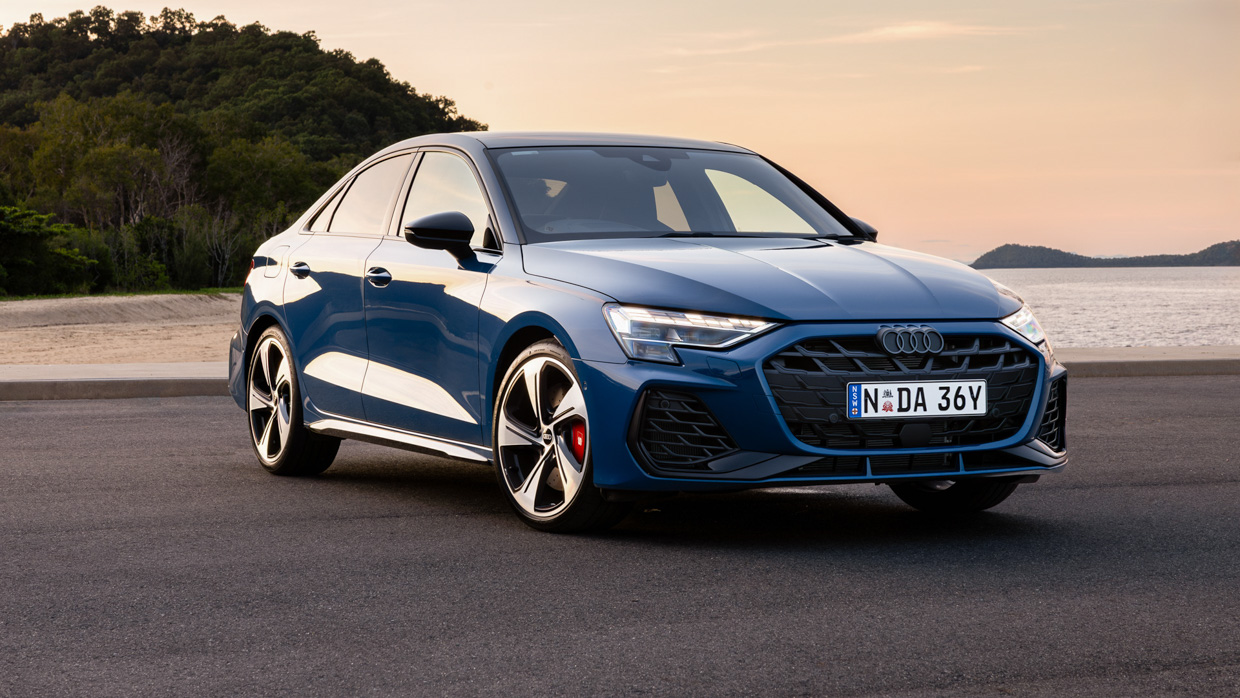
Better yet, the S3 is fitter and quicker than ever, without diluting its core comfort and everyday friendliness. It really is placid if you need it to be one minute, and it can flex its muscles more than you might expect the next.
But it’s not cheap. And a cursory glance at the options list puts you on a fast track to $90K on road. Even without add-ons, the S3 makes a better value case for its Jekyll and Hyde blend than it does as a red-hot performer for the money.



